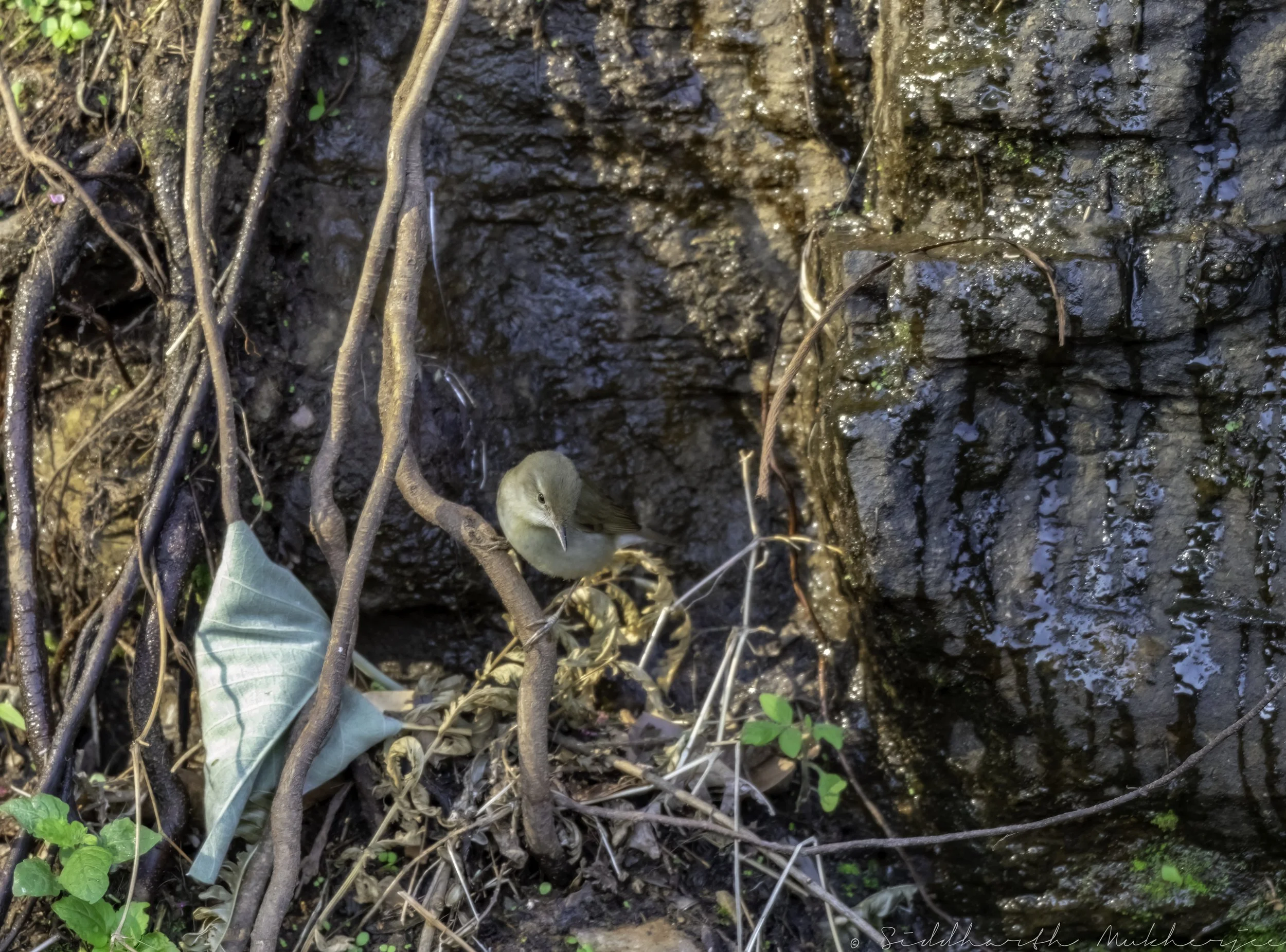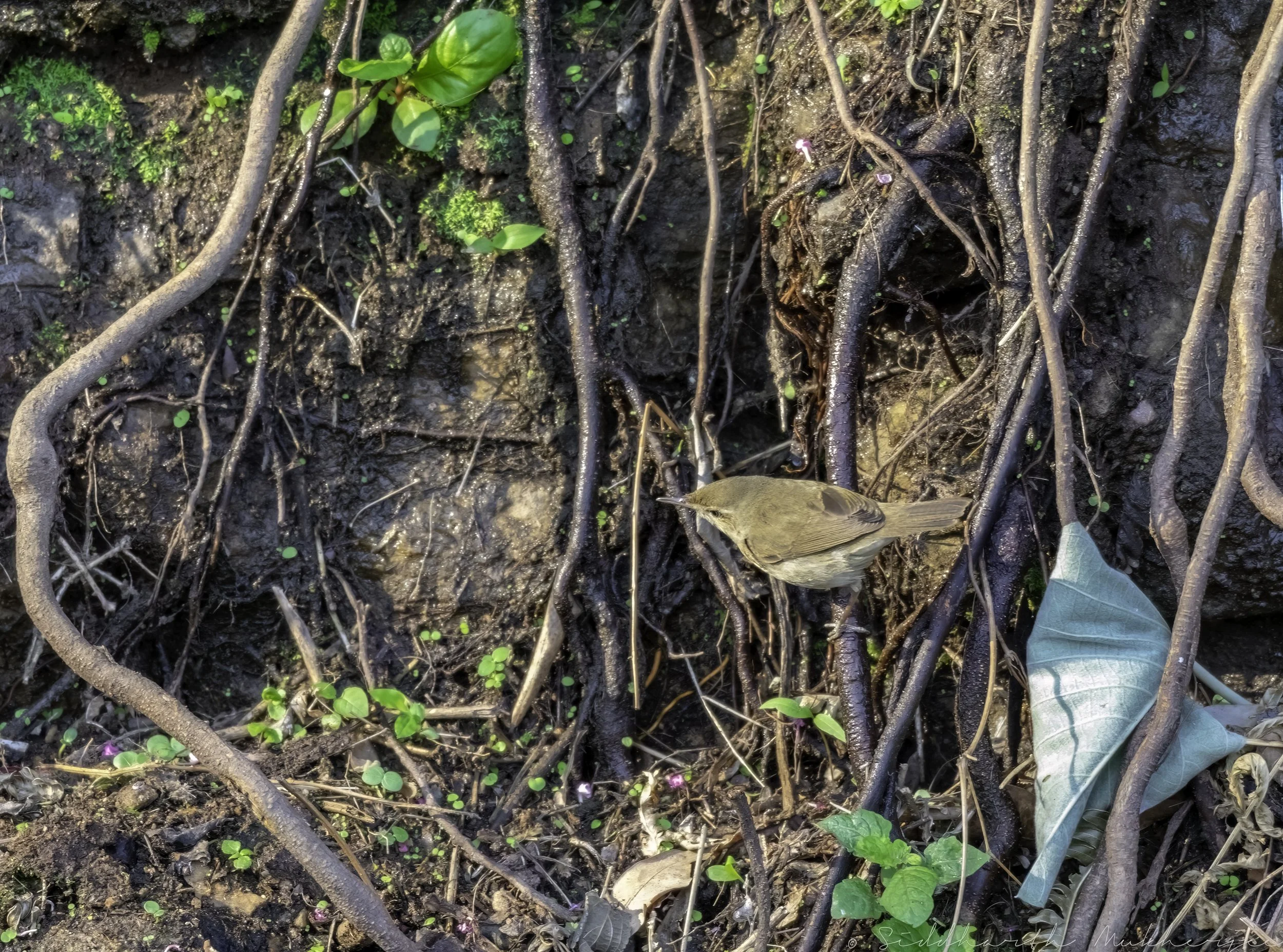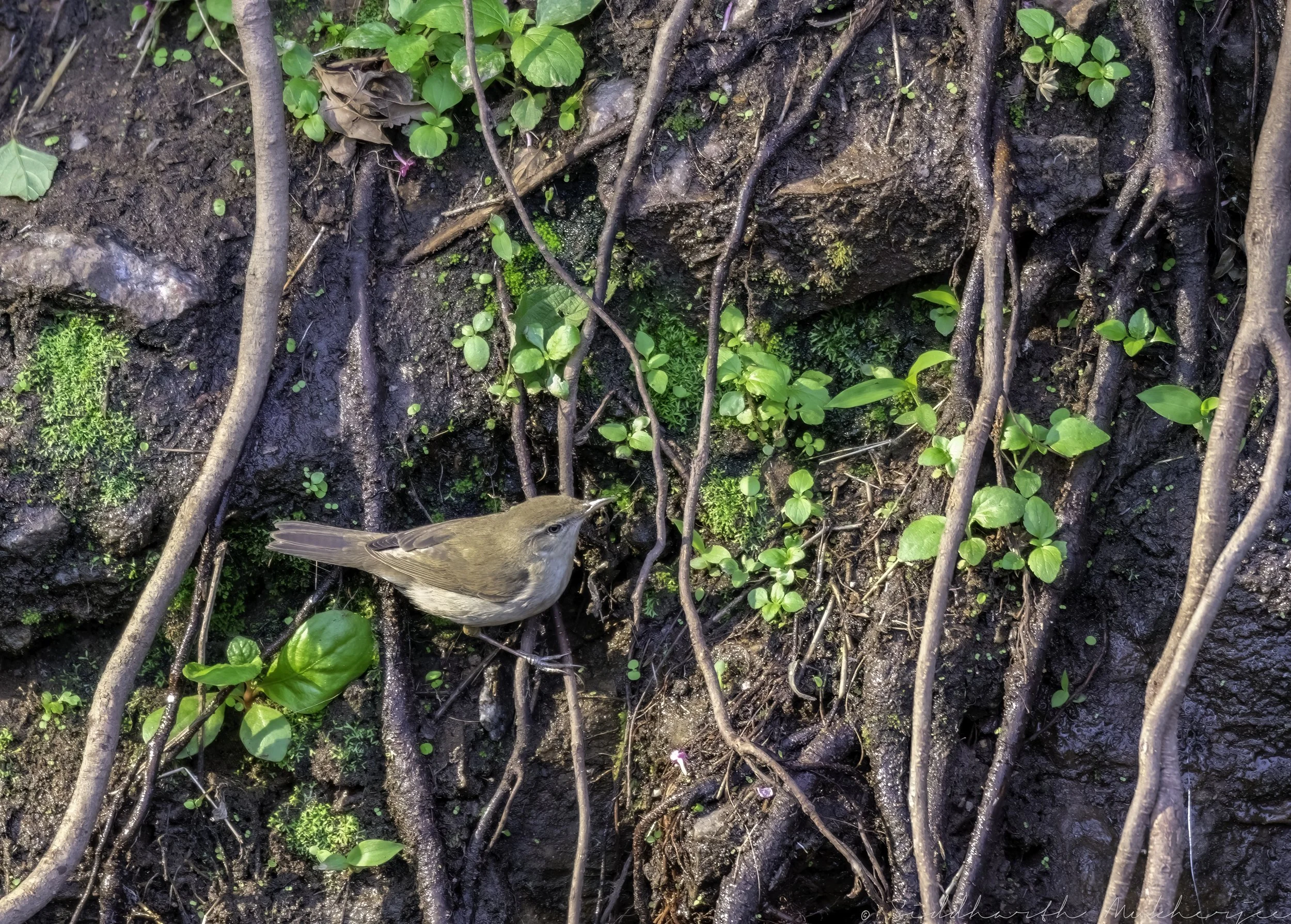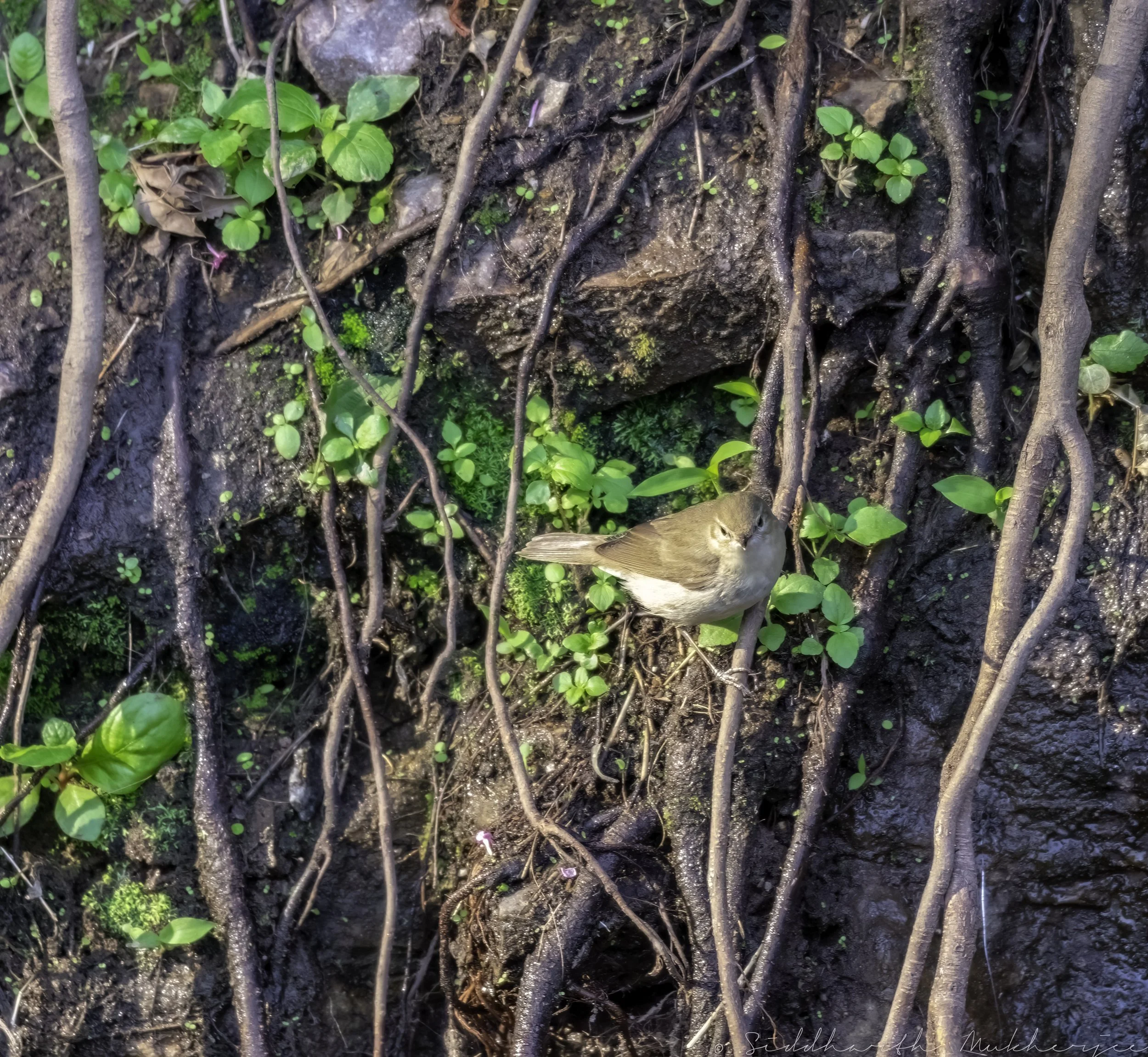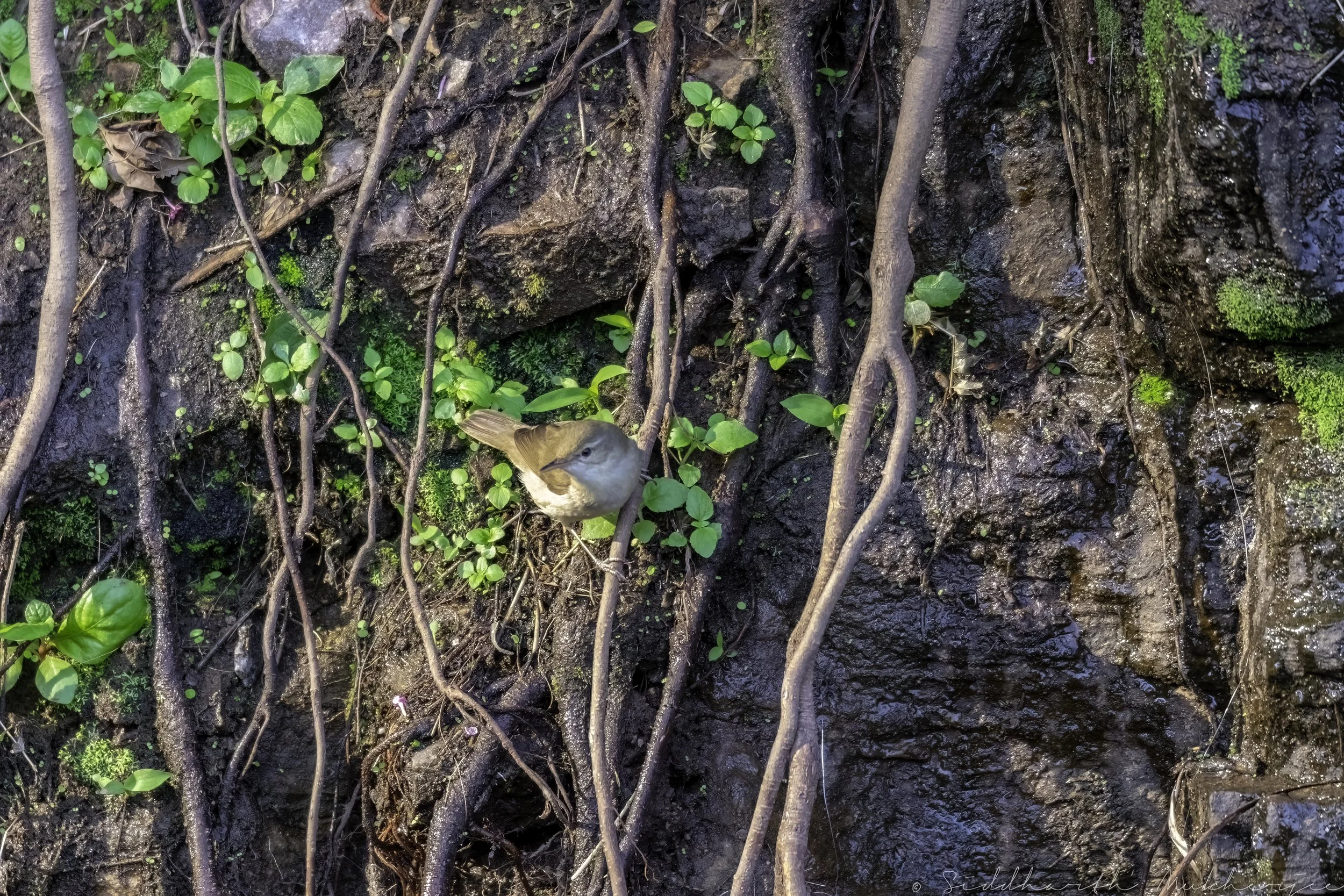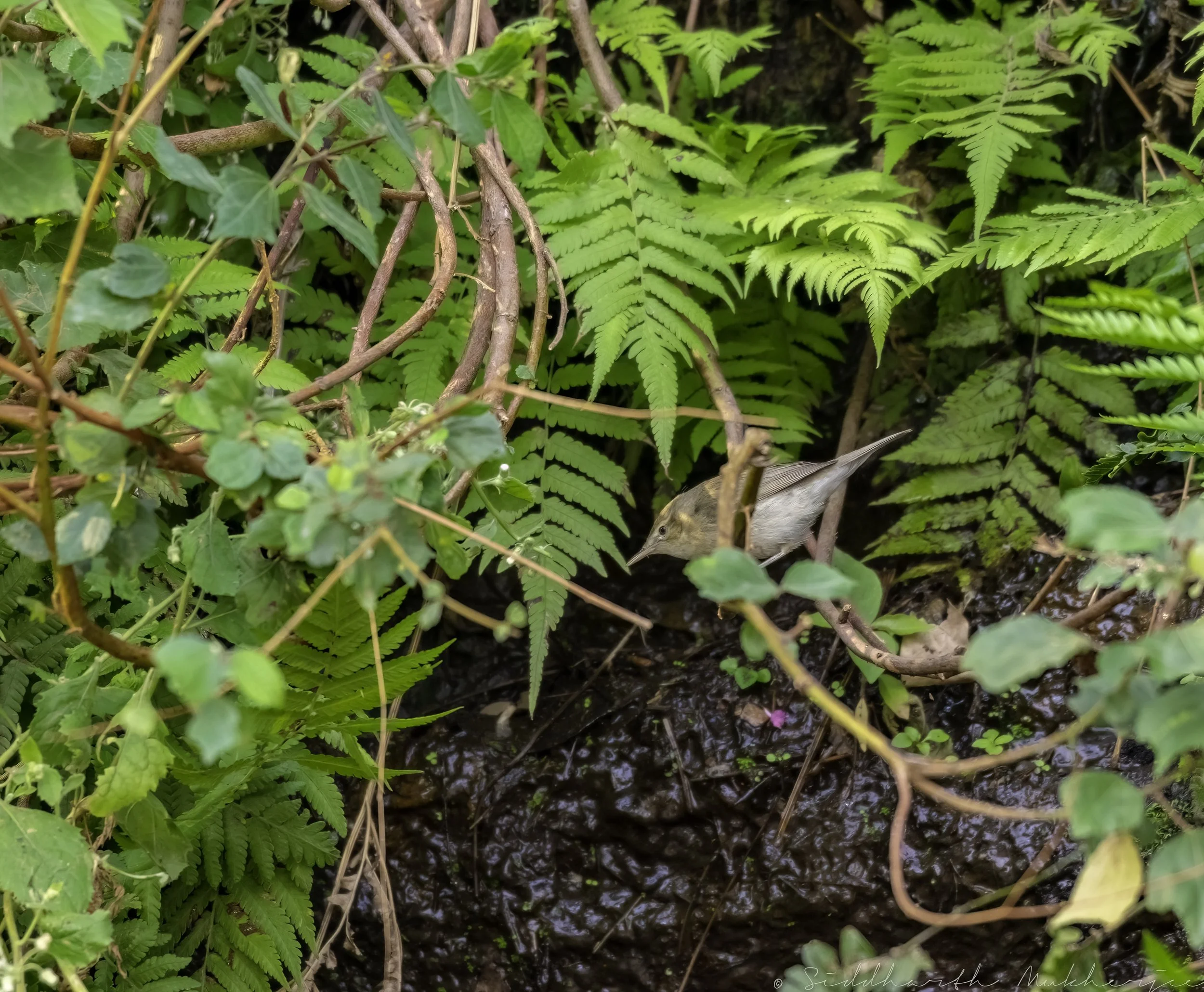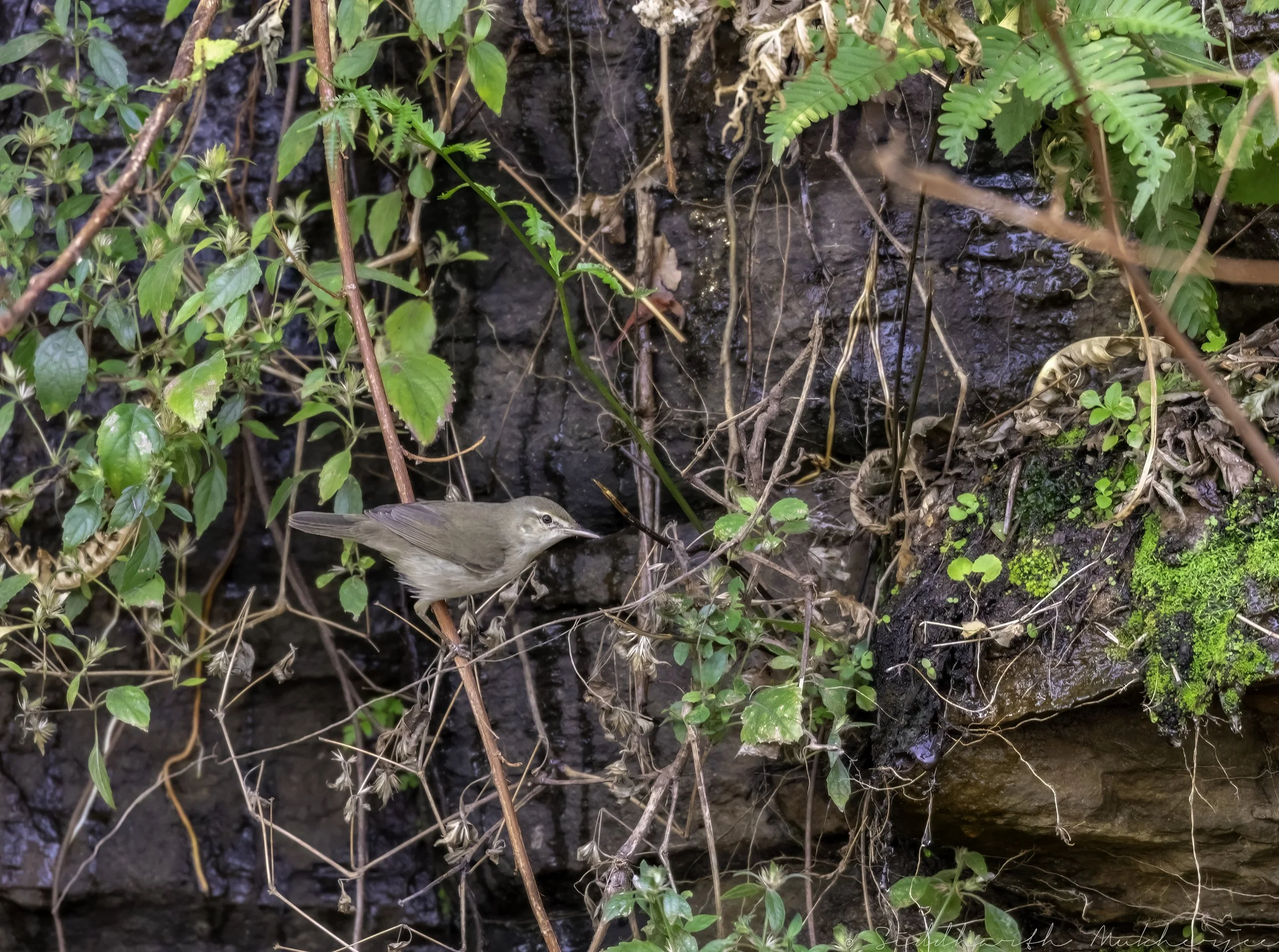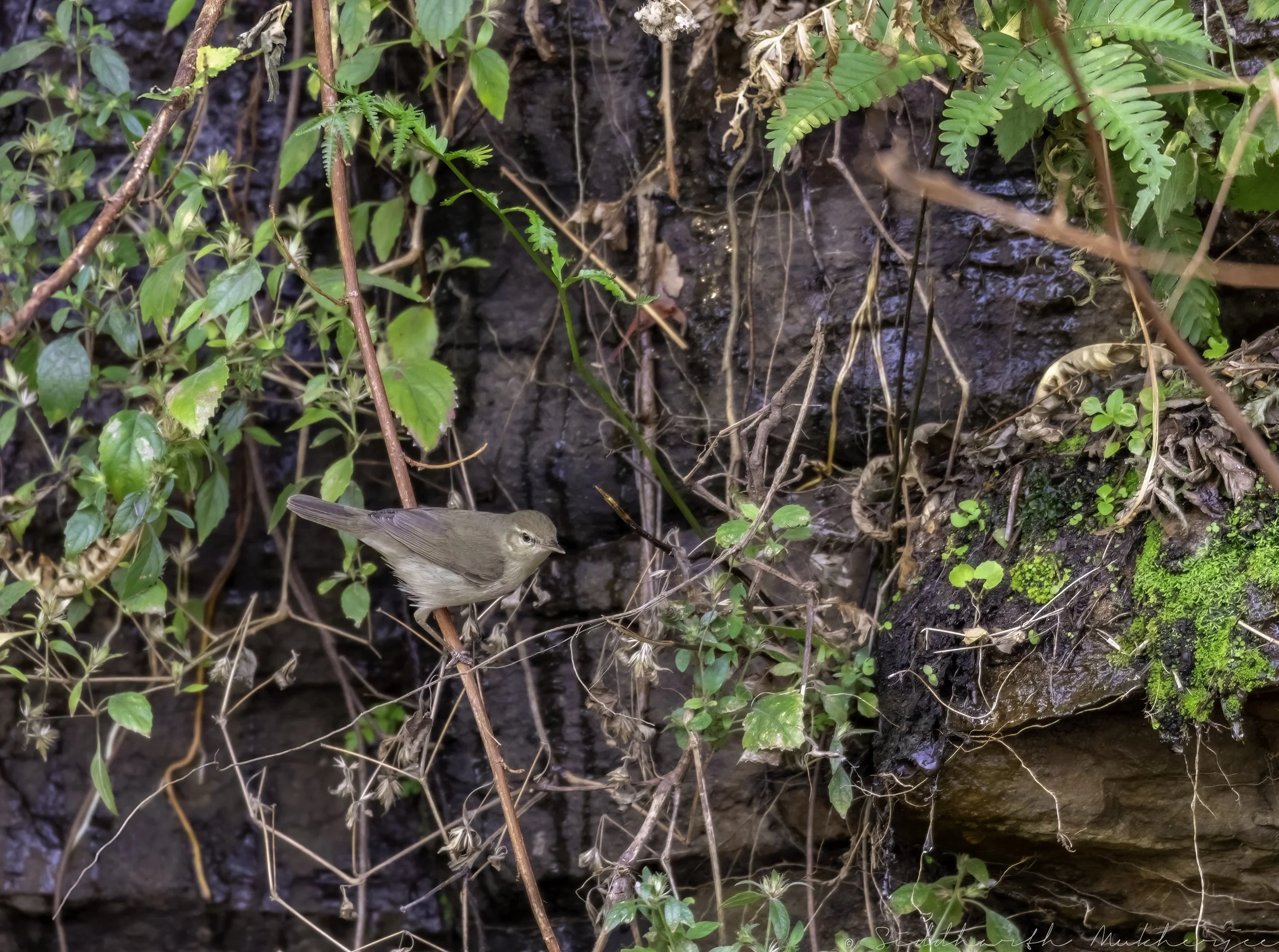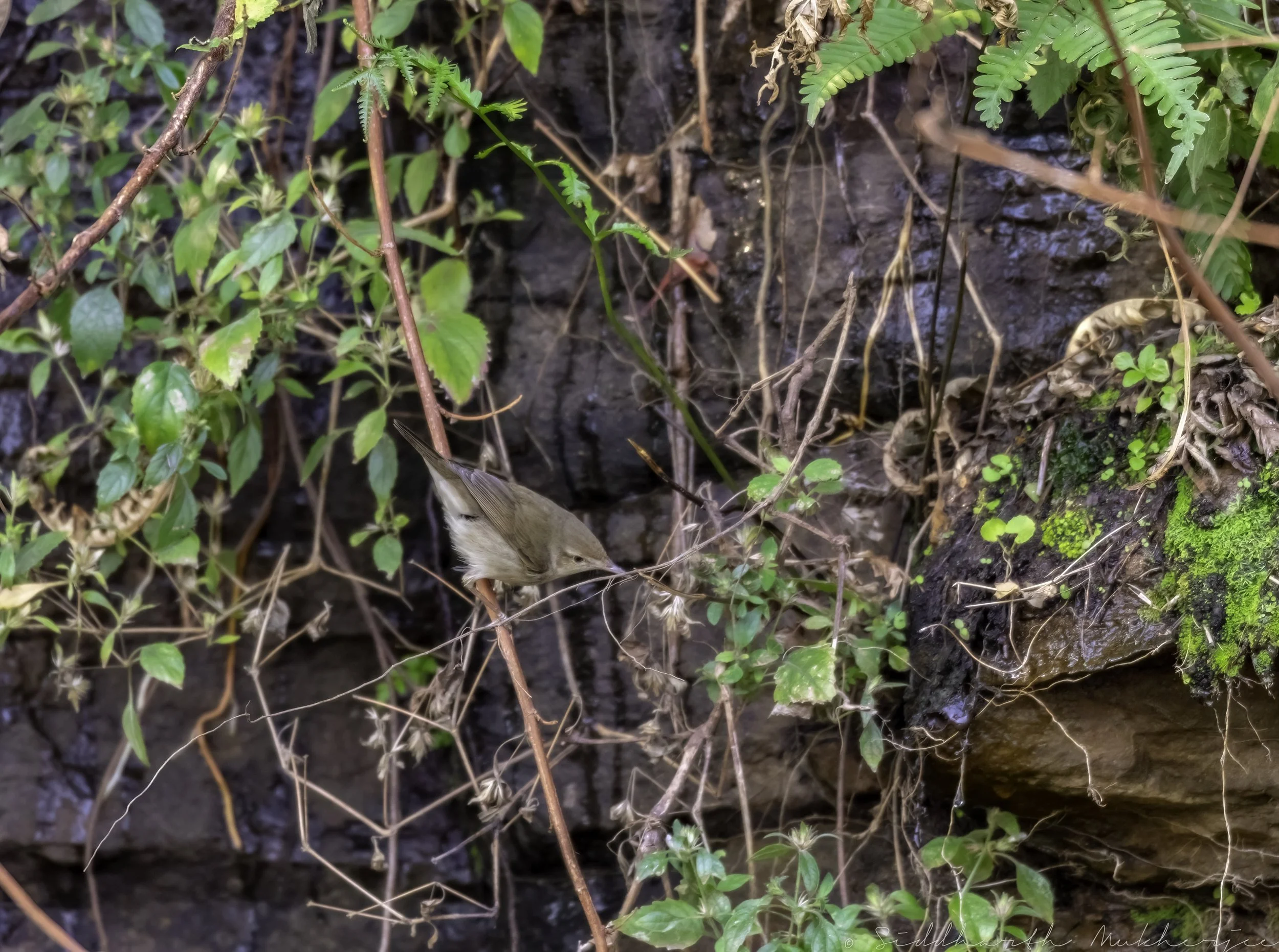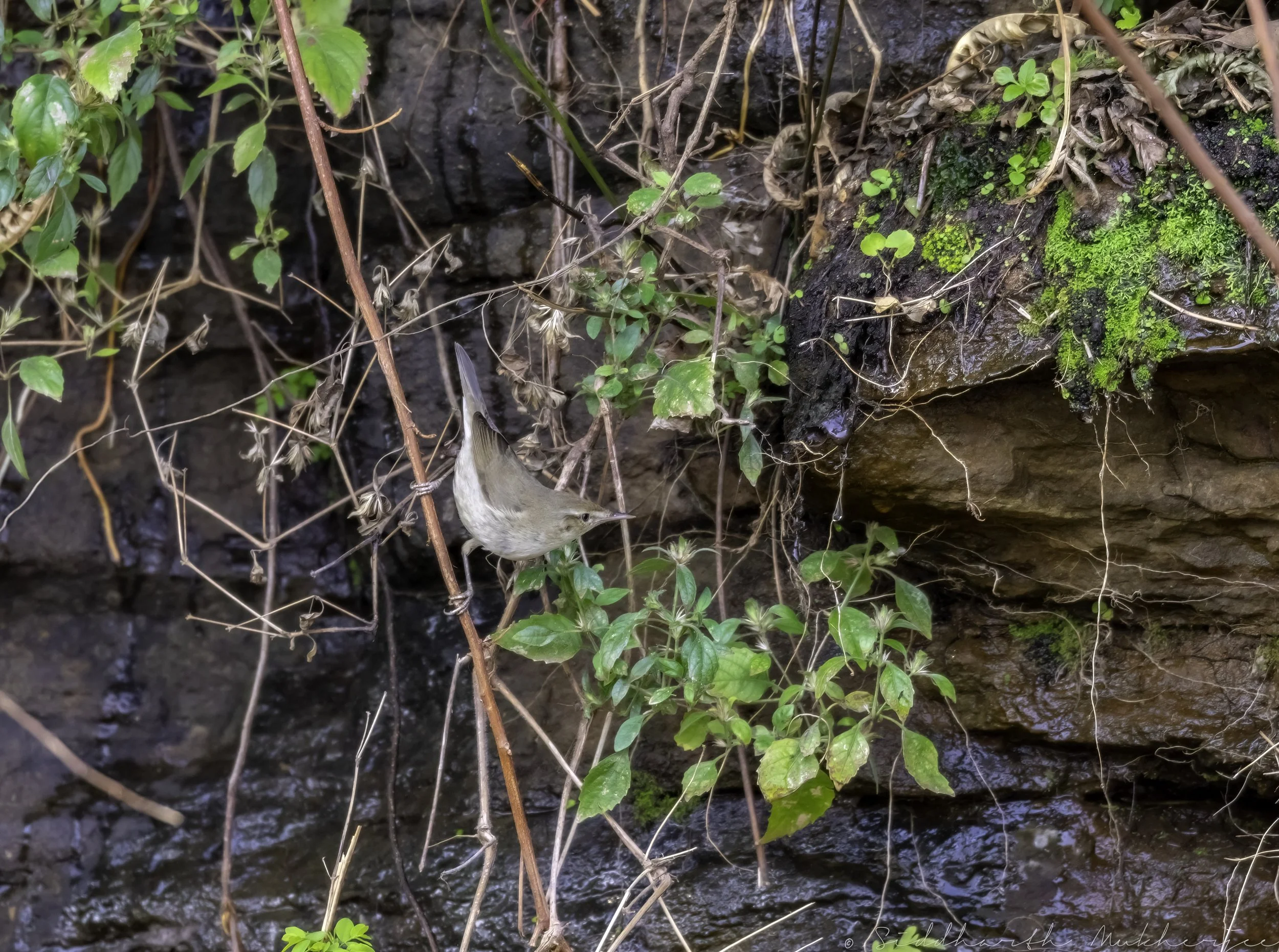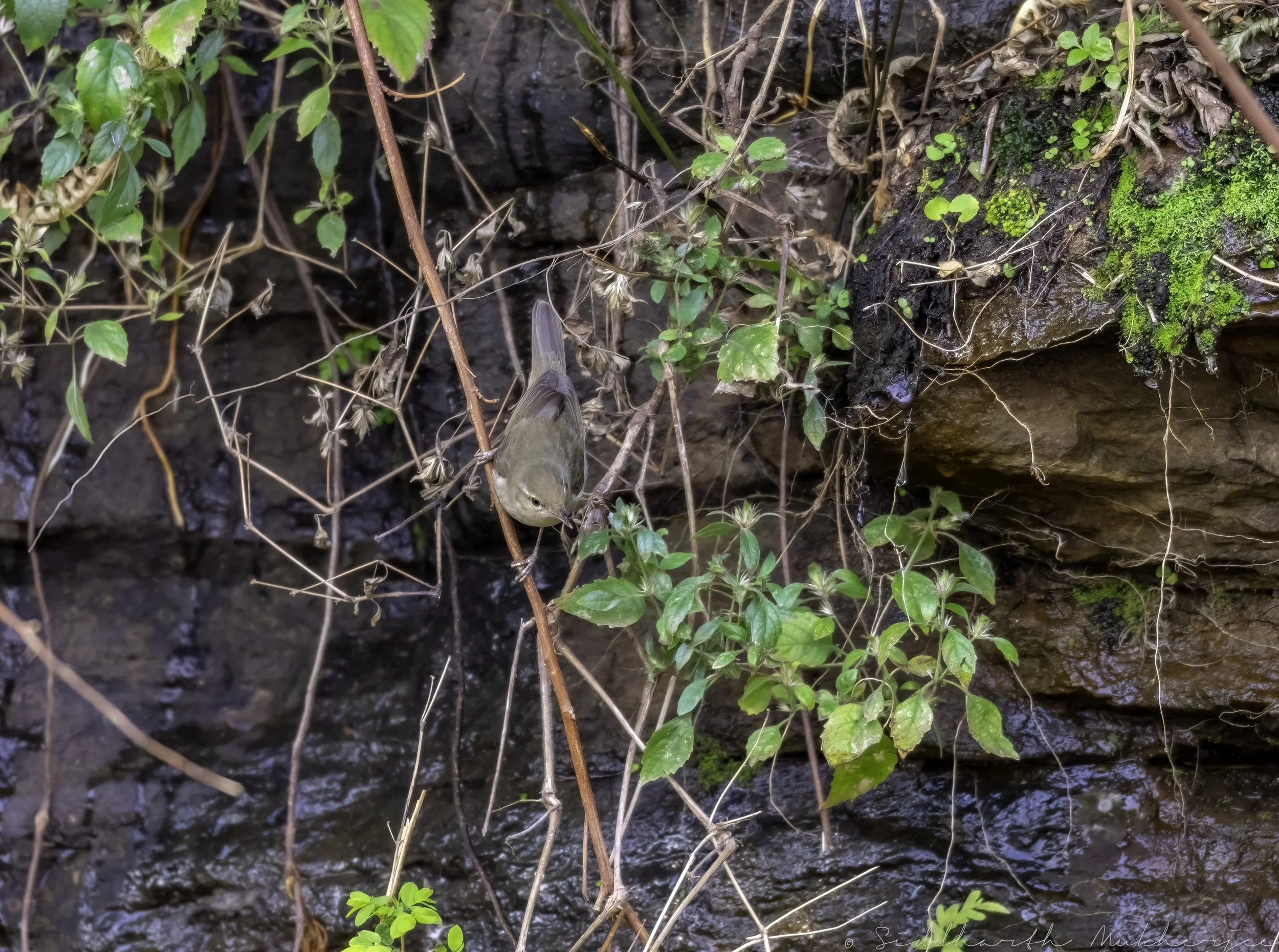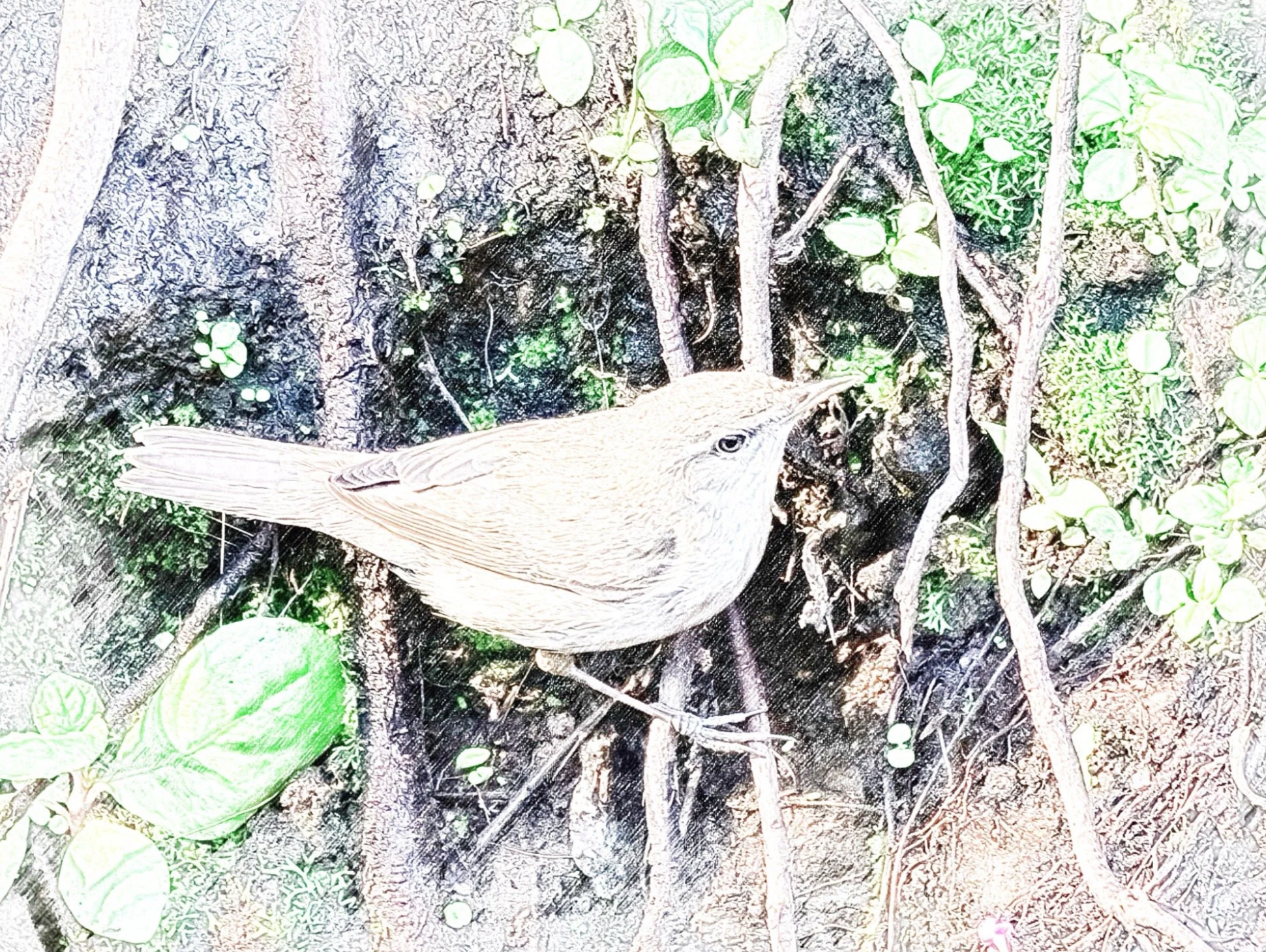Blyth’s Leaf Warbler
Phylloscopus reguloides
Uma Maheshwaram Temple Complex, Telangana
As the winter season descends upon Telangana, it brings with it a subtle chill and a pleasant climate, and a tiny, yellowish-green visitor graces the region's forests and scrublands. This is the Blyth's Leaf Warbler (Phylloscopus reguloides), a migratory bird that journeys thousands of miles from its breeding grounds in the Himalayas. For birdwatchers and nature enthusiasts in Telangana, spotting this vibrant, active warbler is a welcome sign of the winter migration season. I had my opportunity only the one time when I spotted this beautiful migrant near the precincts of the Uma Maheshwaram Temple on the borders of the Nallamalla Range.
Telangana is a state in southern India with Hyderabad as its capital. Hyderabad is home to the Charminar, a 16th-century mosque with 4 arches supporting 4 towering minarets. The monument overlooks the city's long-running Laad Bazaar. Laad Bazaar or Choodi Bazaar is a very old market popular for bangles located on one of the four main roads that branch out from the historic Charminar. Laad meaning lacquer is used to make bangles, on which artificial diamonds are studded. In this 1-kilometre (0.62 mi)-long shopping strip, most of the shops sell bangles, sarees, wedding related items, and imitation jewellery. Once the seat of the Qutb Shahi dynasty, the sprawling Golconda Fort is a former diamond-trading center.
Located in the central stretch of the Deccan Plateau, Telangana has sub-tropical climate and the terrain consists mostly of hills, mountain ranges, and thick dense forests covering an area of 27,292 km². The annual rainfall ranges between 1,100 mm to 1,200 mm and the annual temperature varies from 15 C to 45 C. The State is drained by a number of rivers which include Godavari and Krishna.
Telangana is endowed with rich diversity of flora and fauna. It has dense teak forests on the northern part along the banks of river Godavari. As per the Champion & Seth Classification of Forest Types (1968), the forests in Telangana belong to three Forest Type Groups, which are further divided into 12 Forest Types. The State Government has taken up a massive greening programme, 'Telangana Ku Harita Haram' in the State to plant and protect 230 crore seedlings over a period of 4 years. This initiative aims at achieving the twin objectives of increasing the forest cover and reduce pressure on the existing forest resources, through massive community participation by Vana Samrakshna Samithis (VSS) and Eco-Development Committees (EDCs) in Protected Areas and Watershed Development Committees in the Watershed areas. Recorded Forest Area (RFA) in the State is 26,904 km² of which 20,353 km² is Reserved Forest, 5,939 km² is Protected Forest and 612 km² is Unclassed Forests. In Telangana, during the period 1st January 2015 to 5th February 2019, a total of 9,420 hectares of forest land was diverted for non-forestry purposes under the Forest Conservation Act, 1980 (MoEF & CC, 2019). As per the information received from the State during that last two years, 12,730 ha of plantations including avenue plantations in the State.
Three National Parks and nine Wildlife Sanctuaries, which include the Amrabad Tiger Reserve, Kawal Tiger Reserve, Pocharam Wildlife Sanctuary, Etunagaram Wildlife Sanctuary, Kinnerasani Wildlife Sanctuary, Manjira Wildlife Sanctuary and Pakhal Wildlife Sanctuary, constitute the Protected Area network of the State covering 5.08% of its geographical area.
Nallamala Hills & forest range
The Nallamala Hills and forest range is a significant geographical feature within the Eastern Ghats of southern India, located in Telangana and stretching into Andhra Pradesh. This ~430 km long range, parallel to the Coromandel Coast, features rugged hills and deep valleys and hosts one of the largest contiguous forest areas in the region, encompassing a significant portion of the Nagarjuna Sagar Srisailam Tiger Reserve. The rugged, sparsely populated hills are composed for the most part of jumbled quartzites and slates and exemplify the mountain scenery of the Eastern Ghats. The range is known for its rich biodiversity, eco-tourism opportunities, and important religious sites like the Srisailam temple. It is bounded by the Krishna River to the north and the Pennar River to the south. The region includes important religious sites like the Srisailam Temple, one of the twelve Jyotirlingas. The Nallamala region has faced threats from proposed uranium mining projects, which would jeopardize the Tiger Reserve and the Chenchu's traditional way of life. Organisations like HYTICOS and local tribes have actively campaigned against these projects to protect the delicate ecosystem.
In the Nallamalla Hills and forest range the predominant vegetation is dry deciduous forest, with species such as Terminalia, Hardwickia, and Pterocarpus. The forest also has a variety of medicinal plants. The forest is home to various mammals like Tigers, Leopards, Sloth Bears, Wild Boar, Sambhar, Blackbucks, and Pangolins. A variety of birds, including rare and migratory species, inhabit the sanctuary. Read about some of the species here. It is also host to diverse reptile species, including the King Cobra and Indian Rock Python and the forest is known for unique spider species like the critically endangered Gooty Sapphire Ornamental Tarantula (Poecilotheria metallica). The Chenchus, a forest-dwelling tribe, are the indigenous inhabitants of the Nallamala forest. They traditionally live a semi-nomadic, hunter-gatherer lifestyle and have remained largely cut off from modern society. The Chenchus have a unique, symbiotic relationship with the forest and play a key role in its conservation.
Uma Maheshwaram is the northern gateway to Srisailam — one of the jyotirlingas, on a hill surrounded by high trees. The Uma Maheshwaram temple is dedicated to the Hindu god Shiva located in the Nallamala Forest around 100 km from Hyderabad on the Hyderabad-Srisailam highway, about 4 kms from the village of Rangapur, Achampet. Nearby hills shield the temple and the 500-metre stretch to PapaNasanam from sunlight for most of the day, maintaining a temperature lower than the surroundings through out the year. The area abounds in flora and fauna like the beautiful and vulnerable Yellow-throated Bulbul.
This Blyth’s Leaf Warbler was photographed in and around the temple complex of Uma Maheshwaram.
‡‡‡‡‡
For a print of the beautiful birds from my various sojourns click on the button below to read my process and order a limited edition canvas from the catalog.
Blyth’s Leaf Warbler
The Blyth's Leaf Warbler (Phylloscopus reguloides) is a species of leaf warbler (family Phylloscopidae). It was formerly included in the "Old World warbler" assemblage. It is found mainly in Southeast Asia, southern China and along the Himalayas till northern Pakistan. Its natural habitat is subtropical or tropical moist montane forests. This bird was named after the English zoologist Edward Blyth. In regard to its bird song complexity, which takes into account the number of distinct notes, Blyth Leaf Warbler's high complexity is a consequence of increased variation between song types.
The Blyth’s Leaf Warbler is about 10·5–12 cm long and weighs between 6·2–9·4 grams. It is a medium-sized, well-marked leaf-warbler whose nominate race has a long pale yellow supercilium, dark olive lores and eyestripe. There is a broad yellowish-olive central crown stripe, rather indistinct anteriorly, bordered by dark olive sides of crown, which become blacker posteriorly. The upperparts are olive-green, the median and greater upperwing-coverts are tipped yellow (two broad wingbars), the flight-feathers and tail feathers are dark brown and the inner webs of the outer two rectrices are narrowly edged white. The throat and underparts are whitish, tinged yellow, becoming pale yellow on the undertail-coverts. The axillaries are bright yellow, iris is dark brown, with a dark maxilla and a yellowish mandible, pale orange-yellow or pink. The colour of the legs is variable, from greenish or bluish green to yellow. It differs from very similar Davison’s Leaf Warbler (Phylloscopus intensior) in showing less yellow on head and underparts, and normally in having less white in outer tail. It differs from the Emei Leaf Warbler (Phylloscopus emeiensis) in a better-defined crown pattern and more white in the tail. The sexes are alike and the juvenile is as the adult, but has a plainer crown, browner upperparts, only faint median coverts wingbar and duller underparts. The race kashmiriensis (Kashmir Leaf-warbler) is very like the nominate and doubtfully distinct, though claimed to have yellower upperparts, not so dark crown-sides and whiter underparts. The race assamensis, found in the forests of Northeastern India, Myanmar, and Southwestern China, has darker upperparts, often slightly more white in outer tail feathers, although this is variable. The race ticehursti, found in southern Vietnam, specifically on the Langbian Plateau, has yellower supercilium, crown stripe, wingbars and underparts, and slightly greener upperparts.
Source: Ogaclicks.com
DNA studies suggest a close relationship to the Western Crowned Warbler (Phylloscopus occipitalis) & until recently were considered conspecific with Claudia's leaf warbler (Phylloscopus claudiae) & Hartert's leaf warbler (Phylloscopus goodsoni). Evidence from mtDNA indicates that kashmiriensis is genetically identical to Himalayan populations of the nominate (from which hardly distinct in plumage and voice), and perhaps better merged with the latter. The populations from South China (Yunnan), North West Thailand, Eastern Myanmar and North Vietnam, previously placed in assamensis, now transferred to ticehursti on basis of molecular data. Further research is required. Four subspecies currently recognized.
Phylloscopus reguloides kashmiriensis - Breeds in the northwestern Himalayas from northern Pakistan (Murree Hills) and Kashmir east to northern India (Simla E to Garhwal) and winters in the foothills
Phylloscopus reguloides reguloides - Distributed in the Himalayas of North India to Nepal, South Tibet and South China (South West Sichuan)
Phylloscopus reguloides assamensis - Distributed in the Eastern Himalayas of North East India (Arunachal Pradesh, Assam, Manipur), South East Bangladesh (Chittagong Hills), South East Tibet, and in North and W est Myanmar; non-breeding at lower levels East from Sikkim and South to Bangladesh and South Myanmar.
Phylloscopus reguloides ticehursti - Distributed in South China (Yunnan, South West Sichuan), East Myanmar, North West Thailand (Doi Inthanon) and Vietnam (West Tonkin and, disjunctly, Langbian Plateau in South Annam); non-breeding at lower levels.
The Blyth’s Leaf Warbler breeds in Rhododendron (Rhododendron) and oak (Quercus) forests, also locally in conifer and moist deciduous forests, between 1500 m and 3700 m; in non-breeding season, at lower levels (mostly below 1500 m) in evergreen forest edges, secondary forest, clearings, scrub and bushes in foothills, also edges of cultivation.
The Blyth's Leaf Warbler's migration is primarily an altitudinal one. Its breeding range is situated in the mid to high-elevation montane forests of the Himalayas, including regions of northern India, Nepal, and China, at altitudes between 1,500 and 3,700 meters. As the weather turns colder, these warblers begin their descent to the lower foothills and adjacent plains to escape the harsh Himalayan winter.
The birds undertake their migratory journey around August and settle in their non-breeding grounds, which include the plains and foothills across much of the Indian subcontinent. The Blyth's Leaf Warblers arrive in Telangana and other parts of southern India by late autumn and stay through the winter. During their stay in Telangana, these warblers prefer a variety of lowland habitats, including evergreen forest edges, secondary forests, clearings, and scrubland. They are agile and active foragers, frequently seen flitting among tree canopies and low bushes in search of insects. Their foraging style is distinct; they often flick their wings alternately while hopping between branches or even clinging upside-down to twigs. They primarily feed on small arthropods and larvae. By late March and April, the warblers begin their return journey, ascending back to their breeding grounds in the high Himalayas.
Climate change poses a significant threat to migratory birds, and the Blyth's Leaf Warbler is no exception. Alterations in temperature and weather patterns are disrupting the delicate timing and routes of their annual migration.
Phenological mismatch: Rising temperatures can trigger an earlier spring in the Himalayas, affecting the timing of vegetation growth and insect emergence. This could lead to a phenological mismatch, where the warblers arrive at their breeding grounds out of sync with the peak availability of their insect prey, potentially impacting their breeding success.
Shifted migration patterns: Warmer winters in their traditional wintering areas like Telangana might cause the warblers to delay their migration south or shorten their journey. As a result, they may remain at higher altitudes or closer to their breeding grounds, potentially leading to increased competition with resident species.
Habitat loss and fragmentation: Climate change can lead to habitat degradation and loss across their migration route. For example, changes in monsoon patterns can affect wetland availability and food resources, impacting birds that rely on these areas for stopovers.
Elevational shifts: As temperatures rise, montane birds like the Blyth's Leaf Warbler may be forced to shift their breeding and wintering ranges to higher elevations to find suitable cooler habitats. This can cause their overall range to contract, as they may eventually "run out of mountain" at the highest elevations.
They feed on small arthropods and larvae, occasionally taking small berries in autumn. They feed in the upper levels of tall trees and low down in bushes; occasionally clinging to tree trunks in a manner similar to that of a nuthatch (Sitta), and hangs upside-down to feed under branches. It has the habit, when agitated, of slowly flicking wings alternately. The Blyth’s Leaf Warbler forages alone or in pairs; in non-breeding season and often in mixed-species flocks.
Read more about the nuthatches I have documented in my travels.
Their call is a frequently repeated disyllabic “pit-cha” or “pit-chee”, or trisyllabic “pit-chew-a” or “tiss-oo-eet”. Their song, from mid March to the end of August, is a trilling extension of the call notes, “pit-chew-ee pit-chew-ee pit-chew-ee” or “zit…wher-chee-tee, whee-chee-te-wheet”, also “chi-ti chi-ti ch-ti chi-chi pit-chew pit-chew”.
The breeding season is between February and August and the nest is built by both sexes, a ball of grasses, stems and other material, placed in hole in tree stump, on ground under tree roots, in bank or in stone wall. They lay a clutch of 4–5 eggs which are incubated by the female. There is no information on the duration of incubation and nestling periods and the nests are parasitized by the Oriental Cuckoo (Cuculus saturatus) and the Lesser Cuckoo (Cuculus poliocephalus).
The Blyth’s Leaf Warbler is not globally threatened and is classified as Least Concern. It is common and widespread in most of its range, common in the North Indian Subcontinent, especially in North Eastern parts, but rare and local in North Pakistan, fairly common in China, locally common in Myanmar and Vietnam. It is a common non-breeding visitor in much of South East Asia and no significant threats are identified.
The Blyth's Leaf Warbler's annual journey to Telangana is a remarkable feat of natural navigation and endurance. However, its future is intertwined with the fate of global climate. As climate change continues to alter seasonal patterns and habitats, this tiny migratory bird faces an uncertain future. By understanding the intricate details of its migration and the threats it faces, we can appreciate the importance of conservation efforts and climate action to ensure that this charming winter visitor continues to grace the landscapes of Telangana for generations to come.
‡‡‡‡‡
Related Posts

